Equipment
5 Reasons why last week’s PGA Merchandise Show was the best in a decade
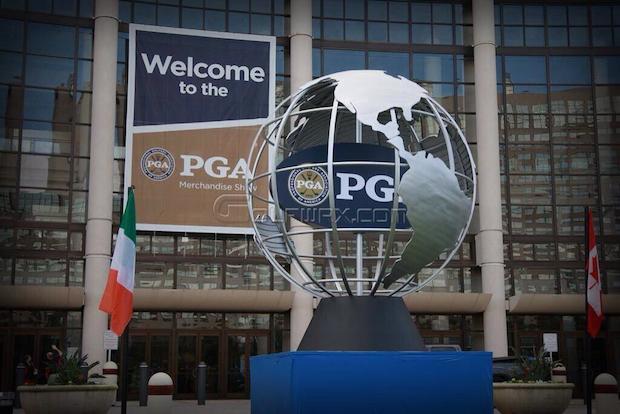
For someone who’s attended about 30 of these extravaganzas, the 2014 PGA Merchandise Show stood out. And not for any earth shattering product launches. I’m sure avid users of GolfWRX knew about—indeed, had seen photos of–most of the hard-goods introductions well before the show.
See photo galleries from the 2014 PGA Show here.
When the show “Product of the Year” is a modified, motorized skateboard–the GolfBoard—it suggests a low bar for product breakthrough. There were no great parties—not like the old days when you needed secret sites and rationed ID badges to keep things under control—or split-level booths or dancing girls or even a show floor you couldn’t walk in a single day.
But beyond reasonably healthy traffic (1,000 exhibitors and 40,000 buyers), this show mattered because it embodied an industry finally facing reality.
Preamble. The game we play, the game of golf itself, is fine. And we’ll continue to love it and play it like we always have. But the industry that must attract and keep new players in the game is not fine. It’s like a range picker that’s leaving half the balls behind. It’s behind. Which is why this year’s show was a breath of fresh air. It owned up to that in a big way.
Five ways the 2014 Show really worked
1. It confronted real participation numbers. For all of the research done on golf participation and spending, and there is tons of it, little of the hard data makes its way to the public. Leaders express “concern” over “declining play,” but rarely present unpleasant statistics in the unvarnished way that Dr. Joe Beditz, the normally cautious president of the National Golf Foundation, did the night before the show at a TaylorMade-sponsored gathering on getting golf going. “Two or 3 years do not a trend make,” said Beditz. “But 10 years does make a trend. We’re leaking golfers—5 million in 10 years.” It got darker: “One in four core golfers has left the game,” he said. Adding, “Core golfers (eight rounds or more) account for 90 percent of golf spending.” This “cancer” reported Beditz, is exacerbated by a nagging image problem. Only 25 percent of non-golfers see it as fun. I saw Beditz the next day. He said he hated playing the role of “the doom and gloom guy.” But it was critical that the room of several hundred pros and media heard it just that way. This is why we need new ideas, it said.
[youtube id=”Tmw6QTPAtQg” width=”620″ height=”360″]
2. It produced an intriguing vehicle for generating unconventional new ideas: Hack Golf. At the same presentation TaylorMade President Mark King, the host, introduced Dr. Gary Hamel, a golfer and management expert who has used crowdsourcing to take companies forward. Crowdsourcing is, basically, a public suggestion box. Similar to the way that code is open-sourced, so are ideas for a business’s strategy. This solicitation of outside ideas is known as “hacking” the business. Hack Golf is the program Hamel devised to help golf get out of its own way, to listen to ideas from non-golfers and former-golfers alike. Many of these ideas, it’s thought, might suggest alternative forms of golf—FootGolf, a kind of combination soccer-golf played in Las Vegas with 21-inch holes—for example. From thousands of suggestions, King, PGA President Ted Bishop and Hamel hope, will come a few hundred solid ones, a handful of brilliant ideas, and two or three to take to market now. Hack Golf is the boldest thing golf has done to reinvent itself. It’s brave. And controversial. Will operators embrace ideas that complicate their lives? We’ll see. Let’s hope it makes a dent. Check out HackGolf.org or find it on Twitter Make a suggestion.
3. It took on the Millennials issue. The show included seminars on marketing to Millennials, teaching Millennials, understanding Millennials. Golf Digest led the way here, presenting research on this group of “non-conforming conformists” ages 18 to 34 who are a key to golf’s future, and a lot of other industries’ as well. Right now significantly fewer Millennials (11 percent vs. 14 percent) are playing than their predecessors. (So are the 35-39-year olds). The Millennials who do play represent great additions. They respect golf’s traditions—they would love to join a country club and don’t think denim should be worn on the course, for example—but they don’t necessarily feel like they are welcome, or have earned the status of “real golfer.” They love numbers and overwhelm teachers with their desire for measurement and tracking. “Sometimes you have to turn off the video and say, ‘Let’s just go chip,’ said one teacher,” and they tend to be very visual. But they also love to inject a bit of added fun into the game and aren’t above, say, playing music on the course. I played with two young Millennials at the hot new Streamsong Resort the day after the Show. Matt was a former NCAA D-3 golfer and his friend Gretchen was a Speed Golf competitor. Good players. A serious runner, she took up golf only five years ago and now shoots in the 70s. Once they got to know me, they introduced me to their music game. Out came the iPhone and on came the Stones. The player who won a hole chose the next 3 songs. I played well, but not well enough to call up Van Morrison!
4. It featured dazzling and increasingly affordable technology and tracking. By my estimate, digital devices that track balls, trace swings, depict great courses that you can play virtually and measure your progress, took up fully three and a half pages in the Show directory—a record, and about 60 percent of hard-goods pages—as well as a huge “share of voice” at the show. GoPro was there, but so was Ion Cameras, that in addition to taking video, links to PowerChalk, a swing-analysis software. Trackman was there, as well as FlightScope, which showed off how its X2 launch monitor can be paired with a BodiTrak, a mat that measures set-up, weight placement and weight shift.
There were software programs that allowed for real or almost real-time communication with your teacher and gave him or her the ability to chalkboard your swing on a video you’d sent. Golf Coach Direct was one. Then there was Game Golf, which during your round, “in the background,” records your shots and stats. This desire to measure and track, somewhat lost on those of us with “caddy” swings built entirely on feel, is nonetheless a huge part of the game for most of the next generation of golfers. They live in a corporate world where data reigns, and they want quantitative answers to everything from spin rate to launch angles. Half the fun for some of these golfers is the charting and tracking and measuring itself. And young tour players and coaches are no exception. Sean Foley, according to someone who’s watched him, will teach one player while watching the TrackMan stats of another as that player hits balls. The Ping nFlight Motion attachment brings that kind of digital feedback to fitting. Which is why it was one of GolfWRX’s “Showstoppers.”
For weekend amateurs, playing virtual golf may be part of the deal. I ran into my old friend Doug White in Orlando. The former head professional at Barton Hills in Ann Arbor, Mich., Doug is now teaching and managing OntheDunesSports, an indoor golf training facility where during the winter Avids play rounds on virtual versions of Pebble, Pinehurst, you name it, and during the summer watch (or play) beach volleyball outside. Doug runs pro-ams on virtual tour courses opposite tour events, and walks the line making suggestions on how players can improve their ball-striking. “The screen doesn’t lie,” says this transformed “old school” pro. “The feedback is immediate.” And so, mostly, is the fun. Go to the “Dunes” web site and the first thing you see is the bar. (Reminding one of the Top Golf site). Not that there’s anything wrong with that.
5. It demonstrated, more convincingly than ever, how “hard” science is helping coaches keep golfers physically and mentally fit. In the tiny booths tucked along a lane leading to the hitting area, we found some very cool things. This is the part of the show I love. At a corner booth there I spent time with Dr. Debbie Crews, a mental-side consultant to Arizona athletes and tour players, whose new book, “The Science of Golf and Life,” makes the connection between our body’s chemistry and our emotions. She was promoting program called THINQ Golf, a kind of Lumosity for golfers. (Sign up and try a “brain game.”)
In a small booth near the hitting range David Leadbetter was promoting Juvent, a device that looks like a scale but transmits “micro impacts” to your leg and spine bones that increase blood flow and promotes bone health. That, too, evolved from hard science: NASA’s efforts to keep astronaut bones stimulated while mostly motionless in space. Fitness devices abounded. One I liked a lot was a collection of slick fitness and balance devices called SmartBodyGolf, promoted by Jeff Ritter, Nike Golf Schools director of instruction, and Randy Myers, of Sea Island, a fitness consultant to many tour players. SmartBody’s “Performance Pack” is about all you need to get and stay fit for golf. I was also curious about HHP2, by Hydro Family Fitness, a source of weight and fitness aids that use water in tubes to strengthen your motion as you swing and shake them. It’s called “Hydrokinetics.” Changing water into muscles? I guess.
- LIKE0
- LEGIT0
- WOW0
- LOL0
- IDHT0
- FLOP0
- OB0
- SHANK0
Equipment
Coolest thing for sale in the GolfWRX Classifieds (4/18/24): Ping PLD Limited Anser – 1988 Open Championship – #2 of only 88 Made
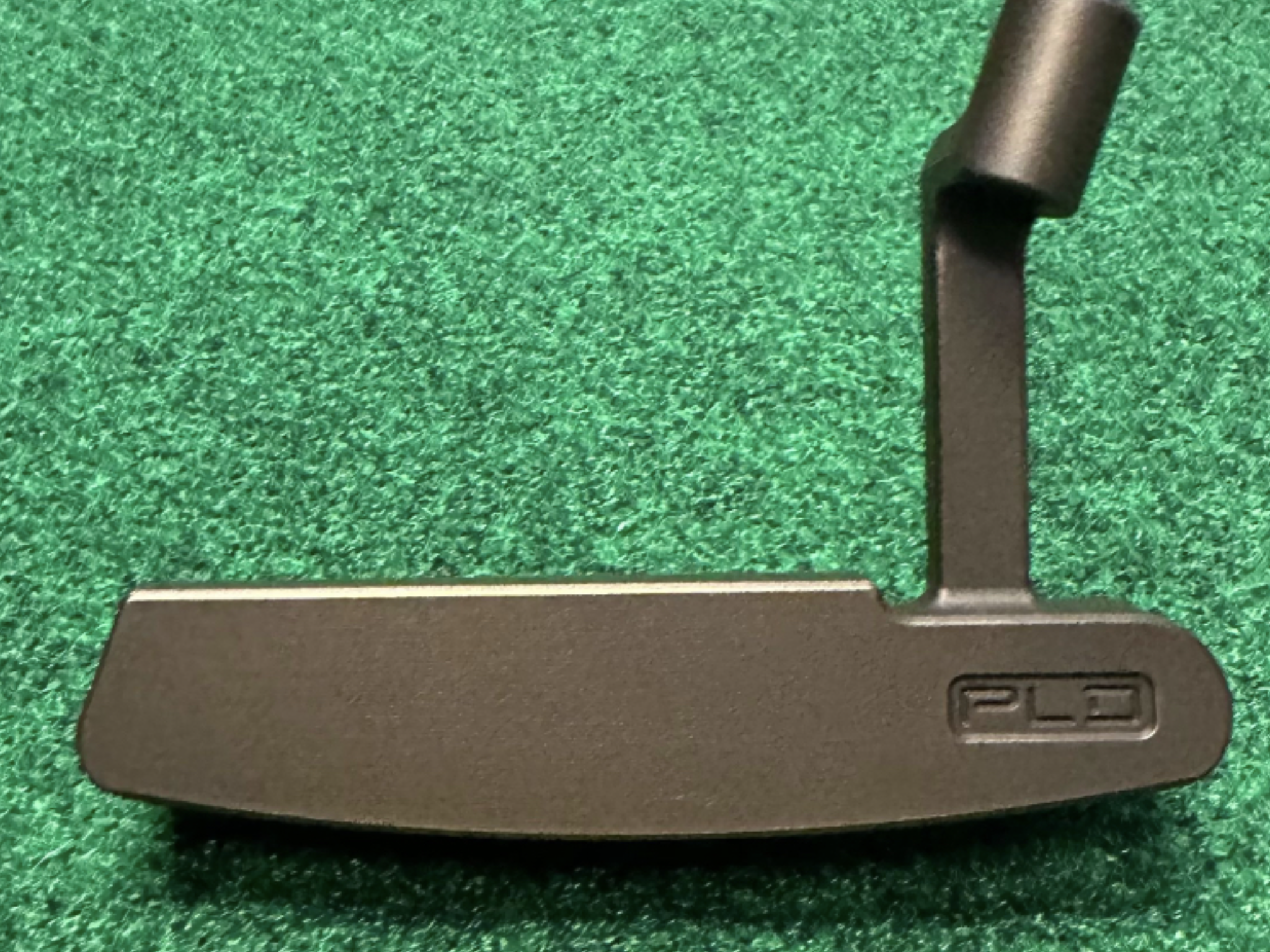
At GolfWRX, we are a community of like-minded individuals that all experience and express our enjoyment of the game in many ways.
It’s that sense of community that drives day-to-day interactions in the forums on topics that range from best driver to what marker you use to mark your ball. It even allows us to share another thing we all love – buying and selling equipment.
Currently, in our GolfWRX buy/sell/trade (BST) forum, there is a listing for a Ping PLD Limited Anser – 1988 Open Championship – #2 of only 88 Made.

From the seller: (@DLong72): “Ping PLD Limited Anser – 1988 Open Championship – #2 of only 88 Made. ?: $1150. ?? 100% milled collectors item from the limited releases commemorating when Ping putters won every major in 1988 (88 putters made). This was the model Seve Ballesteros used to win the 1988 Open Championship. Condition is brand new, never gamed, everything is in the original packaging as it came. Putter features the iconic sound slot.
Specs/ Additional Details
-100% Milled, Aluminum/Bronze Alloy (310g)
-Original Anser Design
-PING PP58 Grip
-Putter is built to standard specs.”
To check out the full listing in our BST forum, head through the link: Ping PLD Limited Anser – 1988 Open Championship – #2 of only 88 Made
This is the most impressive current listing from the GolfWRX BST, and if you are curious about the rules to participate in the BST Forum you can check them out here: GolfWRX BST Rules
- LIKE1
- LEGIT0
- WOW0
- LOL0
- IDHT0
- FLOP0
- OB0
- SHANK0
Equipment
Inside Collin Morikawa’s recent golf ball, driver, 3-wood, and “Proto” iron changes

As you probably know by now, Collin Morikawa switched putters after the first round of The Masters, and he ultimately went on to finish T3.
The putter was far from the only change he made last week, however, and his bag is continuing to change this week at the 2024 RBC Heritage.
On the range of The Masters, Morikawa worked closely with Adrian Reitveld, TaylorMade’s Senior Manager of Tour at TaylorMade, to find the perfect driver and 3-wood setups.
Morikawa started off 2024 by switching into TaylorMade’s Qi10 Max driver, but since went back to his faithful TaylorMade SIM – yes, the original SIM from 2020. Somehow, some way, it seems Morikawa always ends up back in that driver, which he used to win the 2020 PGA Championship, and the 2021 Open Championship.

At The Masters, however, Rietveld said the duo found the driver head that allowed “zero compromise” on Morikawa’s preferred fade flight and spin. To match his preferences, they landed on a TaylorMade Qi10 LS 9-degree head, and the lie angle is a touch flatter than his former SIM.
“It’s faster than his gamer, and I think what we found is it fits his desired shot shape, with zero compromise” Rietveld told GolfWRX.com on Wednesday at the RBC Heritage.

Then, to replace his former SIM rocket 3-wood, Morikawa decided to switch into the TaylorMade Qi10 core model 13.5-degree rocket head, with an adjustable hosel.
“He likes the spin characteristics of that head,” Rietveld said. “Now he’s interesting because with Collin, you can turn up at a tournament, and you look at his 3-wood, and he’s changed the setting. One day there’s more loft on it, one day there’s less loft on it. He’s that type of guy. He’s not scared to use the adjustability of the club.
“And I think he felt our titanium head didn’t spin as low as his original SIM. So we did some work with the other head, just because he liked the feel of it. It was a little high launching, so we fit him into something with less loft. It’s a naughty little piece of equipment.”

In addition to the driver and fairway wood changes, Morikawa also debuted his new “MySymbol” jersey No. 5 TP5x golf ball at The Masters. Morikawa’s choice of symbols is likely tied to his love of the Los Angeles Dodgers baseball team.
Not enough changes for you? There’s one more.

On Wednesday at the 2024 RBC Heritage, Morikawa was spotted with a new TaylorMade “Proto” 4-iron in the bag. If you recall, it’s the same model that Rory McIlroy debuted at the 2024 Valero Texas Open.
According to Morikawa, the new Proto 4-iron will replace his old P-770 hollow-bodied 4-iron.
“I used to hit my P-770 on a string, but sometimes the distance would be a little unpredictable,” Morikawa told GolfWRX.com. “This one launches a touch higher, and I feel I can predict the distance better. I know Rory replaced his P-760 with it. I’m liking it so far.”
See Morikawa’s full WITB from the 2024 RBC Heritage here.
- LIKE28
- LEGIT3
- WOW2
- LOL4
- IDHT2
- FLOP3
- OB3
- SHANK3
Equipment
Why Rory McIlroy will likely use the new TaylorMade BRNR Mini Driver Copper at the RBC Heritage
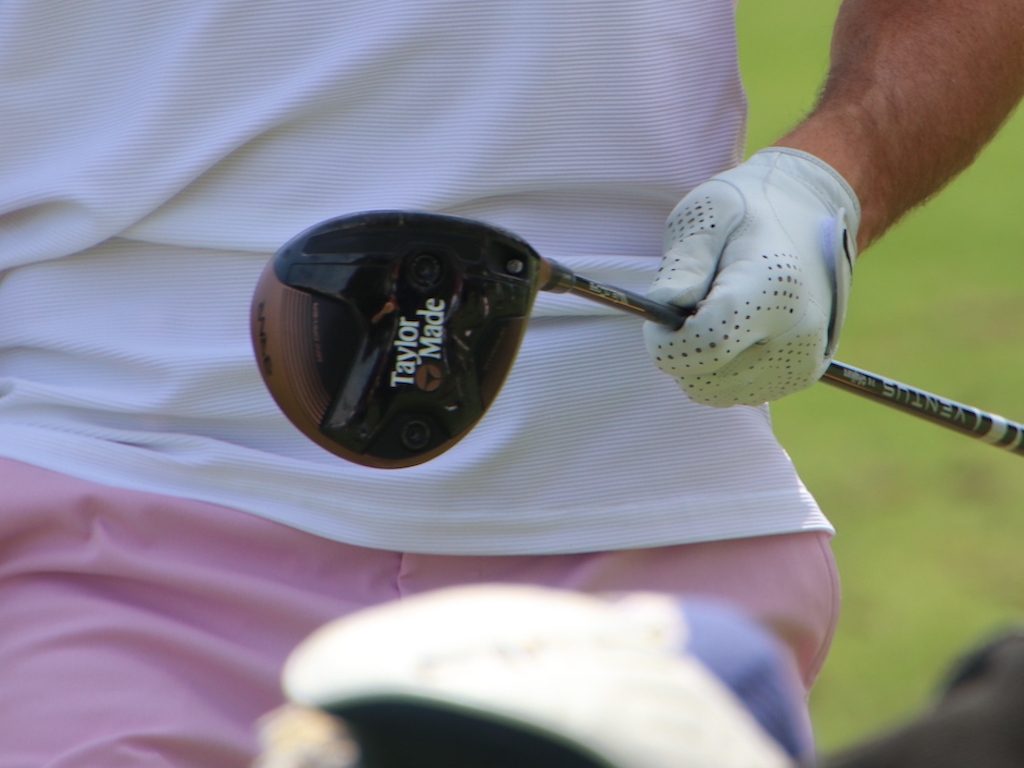
Although we spotted Rory McIlroy testing the new TaylorMade BRNR Mini Driver Copper last week during practice rounds at the Masters, he ultimately didn’t decide to use the club in competition.
It seems that will change this week at the 2024 RBC Heritage, played at the short-and-tight Harbour Town Golf Links in Hilton Head.
When asked on Wednesday following his morning Pro-Am if he’d be using the new, nostalgic BRNR Copper this week, McIlroy said, “I think so.”
“I like it,” McIlroy told GolfWRX.com on Tuesday regarding the BRNR. “This would be a good week for it.”
View this post on Instagram
According to Adrian Rietveld, the Senior Manager of Tour at TaylorMade, the BRNR Mini Driver can help McIlroy position himself properly off the tee at the tight layout.
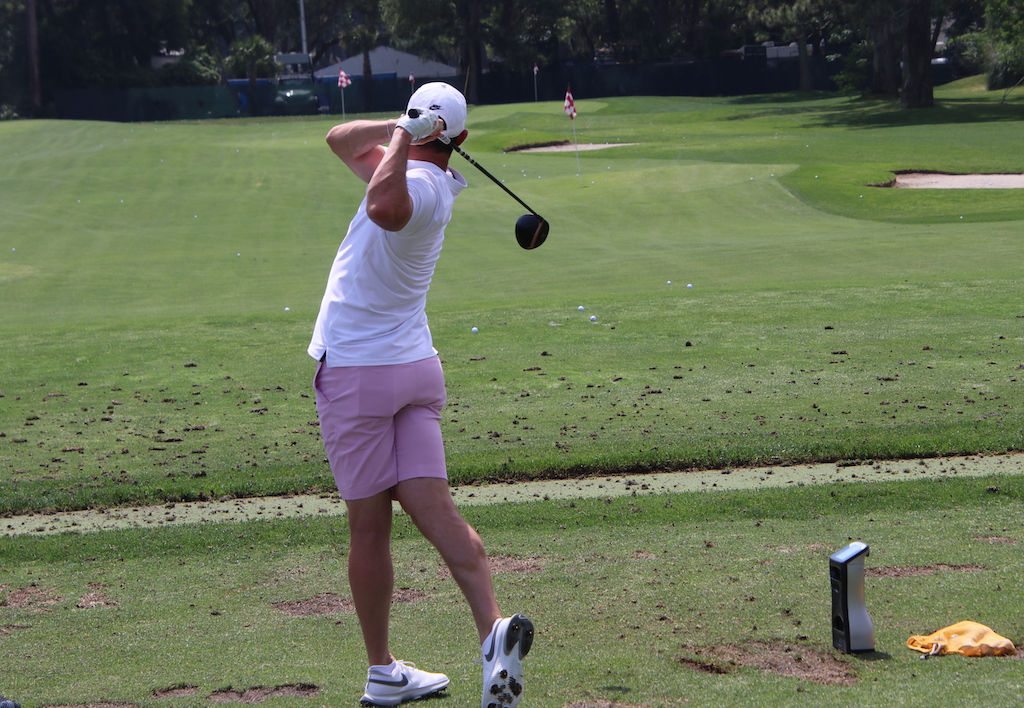
Here’s what Rietveld told GolfWRX.com on Wednesday:
“For someone like Rory, who’s that long at the top end of the bag, and then you put him on a course like Harbour Town, it’s tough off the tee. It’s tight into the greens, and you have to put yourself in position off the tee to have a shot into the green. It kind of reminds me of Valderrama in Spain, where you can be in the fairway and have no shot into the green.
“I’m caddying for Tommy [Fleetwood] this week, so I was walking the course last night and looking at a few things. There’s just such a small margin for error. You can be standing in the fairway at 300 yards and have a shot, but at 320 you don’t. So if you don’t hit a perfect shot, you could be stuck behind a tree. And then if you’re back at 280, it might be a really tough shot into the small greens.
“So for Rory [with the BRNR], it’s a nice course-specific golf club for him. He’s got both shots with it; he can move it right-to-left or left-to-right. And the main thing about this club has been the accuracy and the dispersion with it. I mean, it’s been amazing for Tommy.
“This was the first event Tommy used a BRNR last year, and I remember talking to him about it, and he said he couldn’t wait to play it at Augusta next year. And he just never took it out of the bag because he’s so comfortable with it, and hitting it off the deck.
“So you look at Rory, and you want to have the tools working to your advantage out here, and the driver could hand-cuff him a bit with all of the shots you’d have to manufacture.”
So, although McIlroy might not be making a permanent switch into the new TaylorMade BRNR Mini Driver Copper, he’s likely to switch into it this week.
His version is lofted at 13.5 degrees, and equipped with a Fujikura Ventus Black 7X shaft.
See more photos of Rory testing the BRNR Mini here
- LIKE25
- LEGIT2
- WOW0
- LOL2
- IDHT0
- FLOP0
- OB1
- SHANK3
-

 19th Hole1 week ago
19th Hole1 week agoDave Portnoy places monstrous outright bet for the 2024 Masters
-

 19th Hole3 weeks ago
19th Hole3 weeks agoThings got heated at the Houston Open between Tony Finau and Alejandro Tosti. Here’s why
-

 19th Hole1 week ago
19th Hole1 week agoTiger Woods arrives at 2024 Masters equipped with a putter that may surprise you
-

 19th Hole2 weeks ago
19th Hole2 weeks agoReport: Tiger Woods has ‘eliminated sex’ in preparation for the 2024 Masters
-

 19th Hole4 days ago
19th Hole4 days agoTwo star names reportedly blanked Jon Rahm all week at the Masters
-

 19th Hole4 days ago
19th Hole4 days agoNeal Shipley presser ends in awkward fashion after reporter claims Tiger handed him note on 8th fairway
-

 19th Hole3 days ago
19th Hole3 days agoReport: LIV Golf identifies latest star name they hope to sign to breakaway tour
-

 19th Hole2 weeks ago
19th Hole2 weeks agoAddiction, spinal fusion, and scam artists – Everything Anthony Kim revealed in candid interview with David Feherty

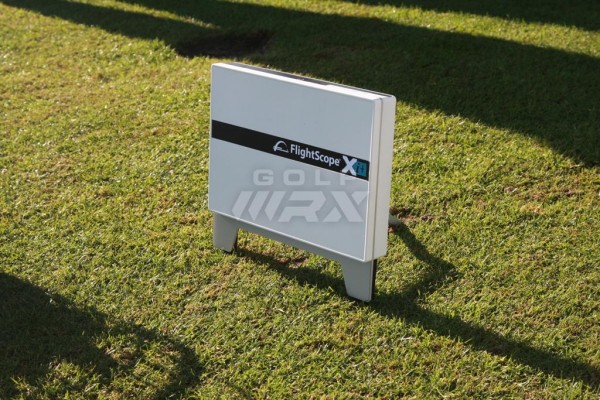
















daveb
Feb 14, 2014 at 5:58 pm
Affluent boomers and greed-heads (e.g., developers) have sucked the air out of golf, period. It is a demographic problem for sure. Kids can’t go play because of the old men elbowing each other out of the way on the courses where they’ve driven up the green fees to $90 a pop on what used to be affordable muni courses.
Ask this: where are the kids going “play”? The sport is backpedaling to the days when kids with numbers after their names will be the only participants.
Developers built a course by the old dump in our town — it opened up with $88 green fees, stamped with “Troon Golf” on the front door. Ha, Troon at the dump! And this fee to play on dead sod under twig-trees held up by stakes in the ground…
Another private course opened out on the plains: a “links course” charging $50K to join and $10K annual fees. Guess what, they went bankrupt too. Everyone wants to cater to the rich, with delusions like they’re Pebble Beach — and not deal with the poor unwashed masses — i.e., the kids who have no money and are looking for somewhere to “play”.
When I was a kid anybody who wanted could walk to the school and play the practice holes cut next to the corn field. Or you could play with your grandpa who was a member of the city course — for free or little of nothing.
Munis are dead, affordability is dead. Golf since 1980 has been a march toward disaster. Heck, maybe it should die. If things don’t change all our kids will be playing frisbee golf or hackey-sack golf, because fun, cheap, fast, friendly games will oust DULL, EXPENSIVE, SLOW, UNFRIENDLY ones every. single. time.
Evan
Feb 21, 2014 at 11:39 am
a bit doomsday, yet making a lot of great points. I’ve said many times that much of what golf and it’s “professionals” care about is profit. Sure, operators and manufactures will claim they care about golf’s future, but only the short term future that benefits them. If golf truly cared about it’s future and the number of players, it wouldn’t sell out to equipment manufactures, golf cart manufactures and chemical companies (pesticides, etc). Most communities should have a muni or public facility (even if it’s 9 holes) that is available and responsible to the community as a whole. Golf carts, equipment sales, artificial turf management, have all contributed to a “elite” environment on most courses. Most operators cater to the customer who buy equipment every year and spends extra in the bar.
Pingback: Juvent Sports
Roger
Feb 2, 2014 at 11:24 am
Driving Accuracy and speeding up the game for ALL people
Yesterday i picked up some 1990 Hogan BH Irons…
Tee’d up the 3 iron on 6 holes of the 9 i played!
Very accurate….could i start a new trend???
ps BH grind and Apex 4 shafts…..my search is over!
Andrew
Feb 1, 2014 at 12:26 pm
It is simply absurd to think that basis points 1 and 2 in this article have anything to do with the premise that the 2014 show was the best in a decade.
Golf participation is down, get the word out (like the author was the only bloke in the room that found this to be an epiphany)…. what a great Show!!!!!
Hack Golf is live (since when do “intriguing ideas” amount to a great show? Last I checked, innovative and salable products do) ….what a great show!!!! Really?
Joe
Jan 31, 2014 at 1:54 pm
One of the main killers is the sheer and amazingly huge arrogance of golf courses and their refusal to change, improve, listen or take action.
Insanity: doing things the same way and expecting different results!
I see this daily at the courses in my area: So many fail at the fundamentals that is laughable, how are they going to get the bigger stuff right.
mlamb
Jan 31, 2014 at 9:39 am
As a few have already noted, the problem is driving accuracy and its negative effect on pace of play.
Go to any public course on a weekend and sit at the first tee. The amount of wayward drives is astounding. Almost every group ends up becoming a search party.
paul
Jan 30, 2014 at 11:42 pm
As a 31 year old who discovered the game only two years ago, I didn’t mind the money or time it took to get confident at it… But my wife sure doesn’t like it. I bought everything in my bag used and on demo sales (thanks Golf Town). Also used coupons. Costs me about $1000 per year to play. Can’t imagine what you guys all pay. I can’t imagine spending $450 for a single club, My wife would shoot me to.
?!?!?!?!
Jan 31, 2014 at 12:25 pm
Grow a pair perhaps? You have every right to spend cash that YOU worked for on golf, Its not drugs or anything lol. She probably spends $100 bucks on a damn haircut, has 50 pairs of shoes at $40-$150 a pop. And spends close to 500 on make-up. Dont Feel bad at all, unless you dont work and pay nothing to contribute.
Baka
Feb 12, 2014 at 8:50 am
If you are not honest with her and set boundaries it will only get worse. Don’t feel bad about getting out of the house and having fun. Encourage her to do the same.
Jonny Bravo
Jan 30, 2014 at 10:04 pm
hack golf is a joke. the sheer financial burden on players and potential players is the main reason of the decline. Think about it. We currently have a tour full of the most exciting players in the game, and we’re still losing members. Is it an interest issue? – i think not. Over the last “ten years,” a lot has happened to the financial industry, and thus, most of the golfing population. A world where you could once earn 15% on a savings account in the 70’s and pay next to nothing for a city membership is over. If they want to keep the game of golf growing, the hype is here – that’s not the issue.
Jonny Bravo
Jan 30, 2014 at 10:24 pm
why would this comment be awaiting approval?
KCCO
Jan 30, 2014 at 9:58 pm
I think it’s quite simple. I have lots of friends 18-34, most REALLY enjoy playing the game. Watching? Only when tiger is playing As for them diving in and completely taking up the game? For most I hear the same thing, it’s to expensive.
I guess it all has a cause and affect. If the game were more affordable, more would play, in turn more would watch, thus making all aspects of the game more easily attainable. Majority of the group I speak of, borrow clubs to play 4 rounds at local muni, and watch when tiger plays. A very small percentage dives in completely, ie. country club, putting a reputable bag together (just meaning decent quality gear) a few outfits for the course, and could tell you who Luke Donald is. I wish it were more people, and easier to get into, but now that I think about it, it is expensive…I truly think that’s why this game lacks growth, and beside my once a week “group”, I’m playing with a new person on a decent amount of outings, and his make-up is 50 years+, 80k annual income, and 9 outta 10 times a great person. Just wish more could be done to get that younger crowd more involved.
Jonny Bravo
Jan 30, 2014 at 10:06 pm
I concur, KCCO. BTW… KCCO yourself, good man.
Baka
Feb 12, 2014 at 8:54 am
+1
Evan
Jan 30, 2014 at 6:14 pm
So much confusing and conflicting information in today’s game. You want to fix it? Try telling Taylormade/ Callaway/ Ping to start promoting accuracy and selling drivers with 13 degrees of loft and 43 inches long for 90 % of golfers. Move courses back to 6000-6500 yards and place a premium on accuracy (which will also decrease maintenance $ and shorten rounds).
That would just be a start!
Evan
Jan 30, 2014 at 7:04 pm
Here’s a crazy idea… instead of placing a limit on groove size (which is impossible to tell on a round to round basis or at an amateur tournament). Place a limit on Length of Driver (or longest club)… 43″. It would be very easy to regulate, even for amateurs and between that and 460cc/ COR manufacturing limitations, courses could be shortened and the average player would be more accurate and play faster.
I see people every day pull out there new 46″ driver which the manufacturer says is the best driver ever made and yank it into the bushes 180 yards away. How hard is it to tell the person that they spent $400 on a driver that doesn’t address the hardest part of golf? Accuracy and Consistency…
Ty Webb
Jan 30, 2014 at 8:50 pm
Tee it forward dude……
Evan
Jan 30, 2014 at 10:48 pm
Tee it forward requires guys to check their egos at the door… which most won’t. You can call it what you want, but most will still refer to forward tees as “ladies” or “seniors”. I have only met a couple people who will tee it forward because it makes the game more fun for them. Limiting driver length would help high handicaps hit the club face more consistently, shortening a course would tee it forward without having to have an individual admit that he needs to tee it forward. Average driver length on tour is 44.5″? They don’t advertise that, though… would ruin the distance marketing.
mick
Jan 30, 2014 at 4:58 pm
The proper course of action is likely the opposite of whatever Mark King thinks is a good idea.
jason
Jan 30, 2014 at 5:33 pm
if they keep pushing hack golf you lose the core and then it will die …. why does a past time have to grow its a game….. sorry if your international business is only making 1 billion a year tm/adidas is ruining the game. by pushing there bottom line as growing the game… golf it not losing golfers it losing people buying new clubs or a least in the areas I have seen with my own two eyes
Jonny Bravo
Jan 30, 2014 at 10:09 pm
haha sooooooo true
Rob
Jan 30, 2014 at 8:54 pm
HAHA!
So true; SO true…
Mikey
Feb 22, 2014 at 11:40 am
+ 1